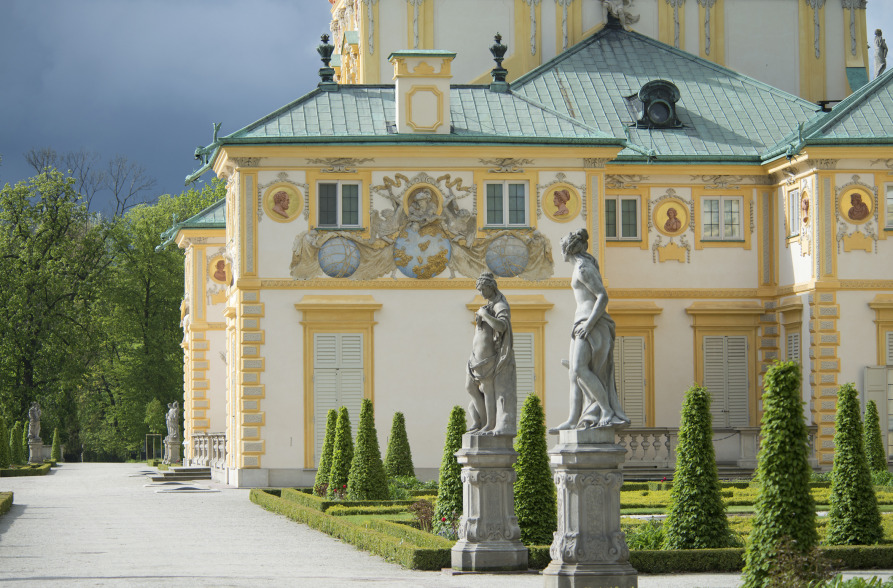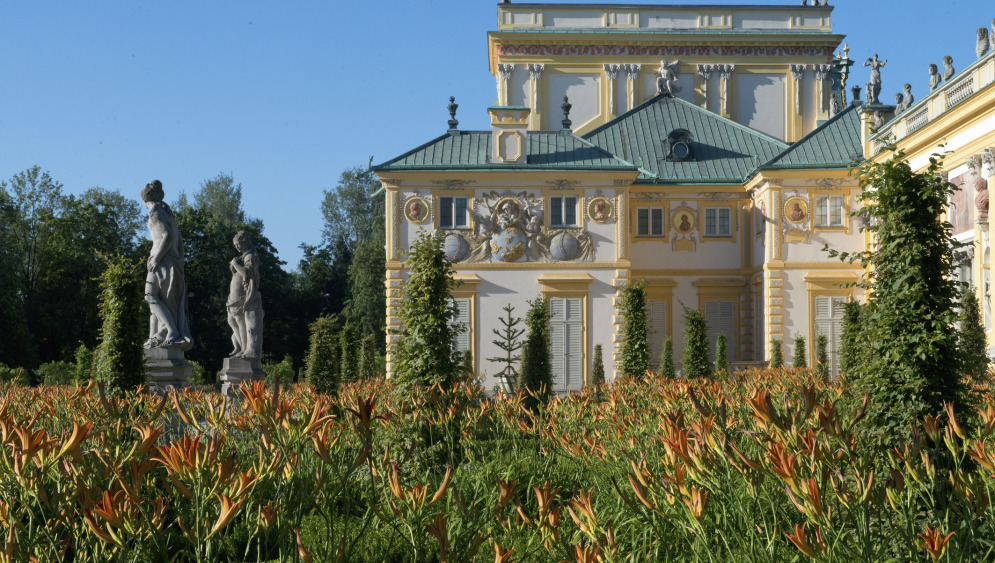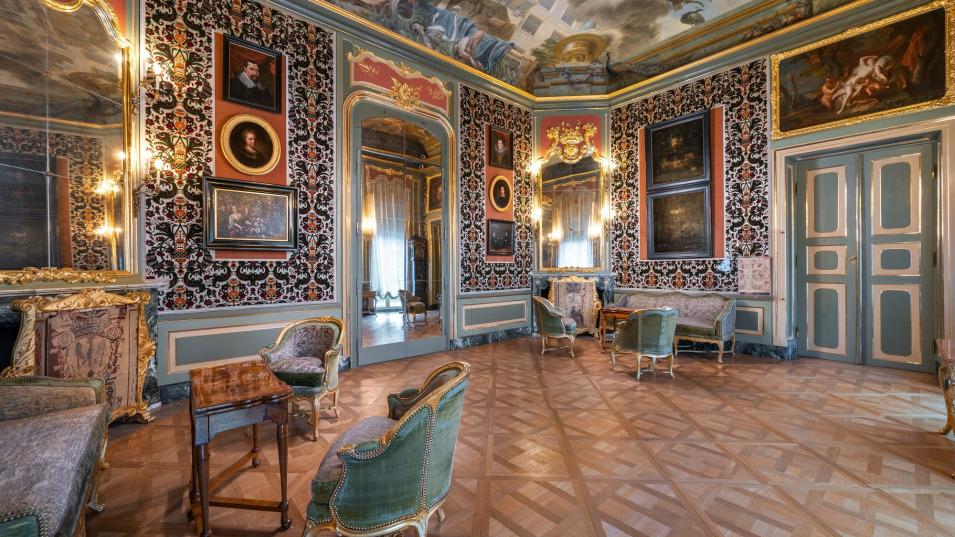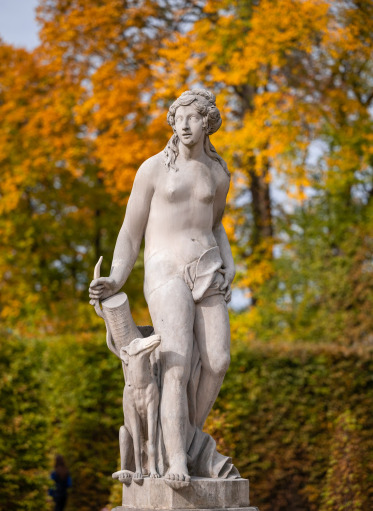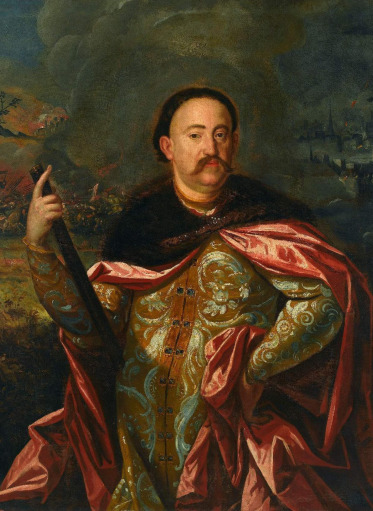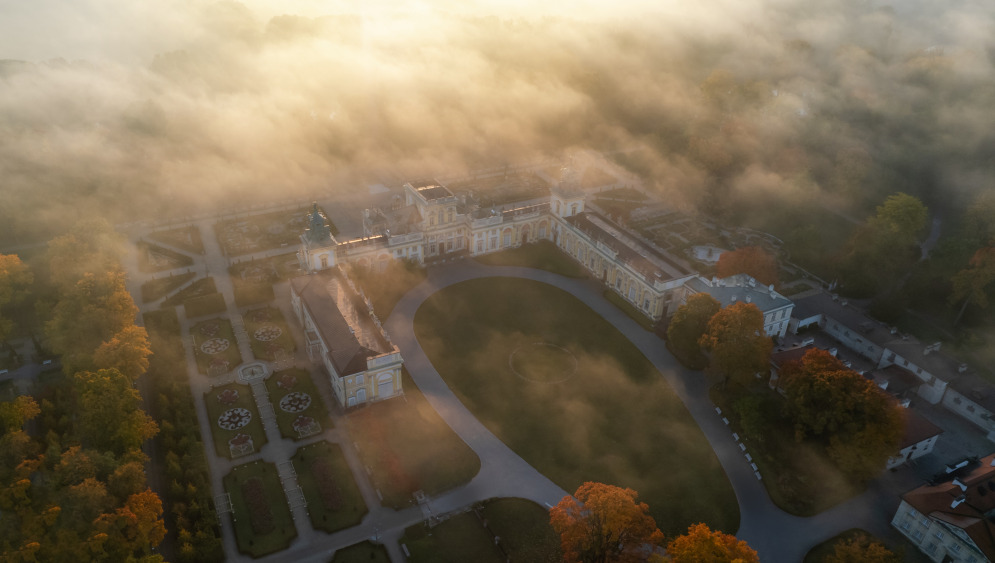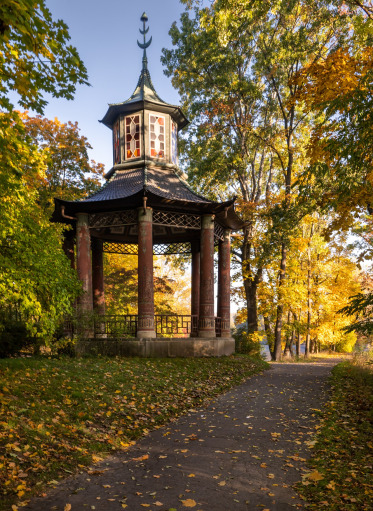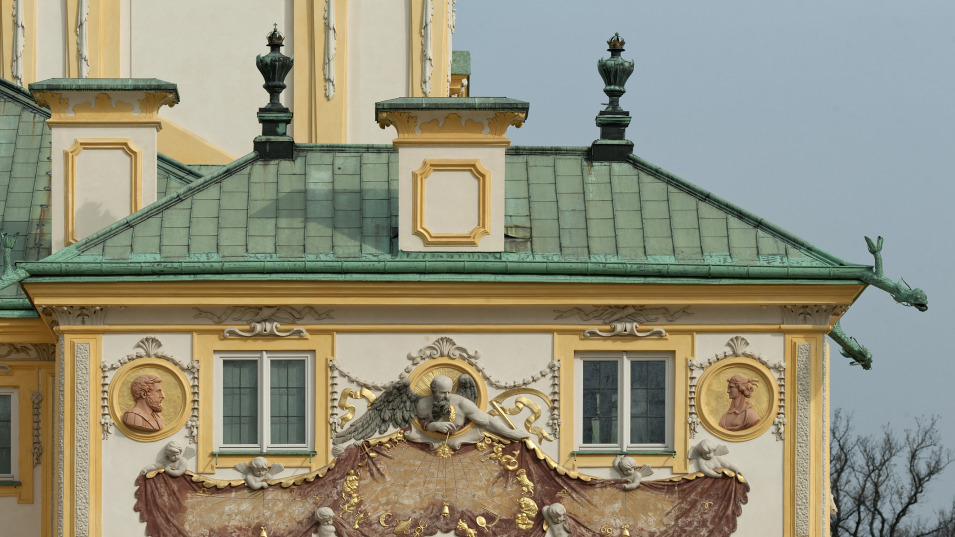King Jan III's Palace at Wilanów
At the Museum of King Jan III's Palace at Wilanów you can experience the beauty and splendour of the royal residence. The Baroque Palace with its surrounding historic gardens, Park and Nature Reserve is a place where history is present in thick and intertwined layers. In the 17th century, the Palace was the home of a valiant king who rested here with his family, but also used the space to pursue his scientific and horticultural passions.
On the façades of the Palace, he left a record of his victorious battles and decorations drawing inspiration from patterns of the culture of antiquity, which he knew and loved well. Subsequent owners from aristocratic Polish families expanded Wilanów Palace, and in 1805 Stanisław Kostka Potocki opened it to the public as an art museum, boasting a rich collection of works of European and Oriental art and priceless mementos related to the history of the Polish-Lithuanian Commonwealth. Today, the Palace and the historic Wilanów gardens are open to everyone – to experience, see, explore and enjoy the richness of culture and nature.
The historical royal residence in Wilanów combines the traditions of an Old Polish court, an Italian villa and a French palace located between a courtyard and garden. It was established at the end of the 17th century for King Jan III Sobieski, an outstanding strategist lionised for his victory at the Battle of Vienna in 1683, a patron of artists and scholars, a lover of books and a proprietor of numerous well-managed landed estates. The summer residence in Wilanów was his private home, giving respite from the bustle of the capital, while at the same time remaining close enough to the official residence of the ruler and seat of the Sejm of the Polish-Lithuanian Commonwealth – the Royal Castle in Warsaw.
Around the Palace, magnificent gardens with grand carpets of flowers, decorated with sculptures and elements of garden architecture, a grange with outbuildings, and a menagerie were established. In the rich program of decoration of the façades and Palace interiors, we can still admire the power of the original message created by Jan III, who himself decided on the choice of themes and architectural forms of buildings. This highly educated monarch drew on ancient traditions in a way which was legible to his contemporaries, constructing an image of a ruler whose virtues contribute to the well-being of the Commonwealth and its inhabitants. This is why in the decorations we see so many mythological themes and statues of muses, the patrons of the liberal arts, and portraits of Roman emperors and heroes. There are also many themes related to love, because Wilanów was the home of a loving couple – Jan and Maria Kazimiera Sobieski, who together raised four children.
King Jan III spent the last moments of his life at Wilanów and died there, his sons subsequently taking over the residence. It was bought in 1720 by Elżbieta Sieniawska, an influential and talented magnate. She appreciated the symbolic value of Wilanów, took care of the restoration of the Palace, and added wings to it in accordance with the intentions and plans of Jan III. Further owners of the Palace also expanded the residence while taking care to preserve its character, uniqueness and spirit of the place. Izabela Lubomirska ordered a pavilion to be constructed adjacent to the south wing of the Palace, with an original, richly equipped Bathroom and the free-standing buildings of the Kitchen and Guardhouse, which were designed by the outstanding architect Szymon Bogumił Zug.
In 1805, on the initiative of Aleksandra and Stanisław Kostka Potocki, owners of the Palace since 1799, the royal apartments and mementos of the Sobieski family, as well as an excellent collection of works of European and Far Eastern art including paintings, sculptures, handicrafts, antique ceramics and porcelain were made available. This is how the first art museum in Poland was created. The pearl of the collection is the equestrian portrait of Stanisław Kostka Potocki (1781), a painting by Jacques-Louis David, one of the most outstanding European painters.
Since 2004, a comprehensive revitalisation of the façades and interiors of the Palace and gardens have restored the splendour of the royal residence, so eagerly visited by the public. Today, the Museum actively carries out its educational mission by organising exhibitions, concerts, museum lessons devoted to both the cultural and natural assets of the Wilanów residence, conferences and seminars on the history and culture of Old Poland, as well as conducting scientific research and publishing books and catalogues. Workshops in historical reconstruction, in particular culinary workshops, are very popular, during which recipes from the oldest cookbooks published by the Museum in cooperation with researchers on the history of food and table manners are used.
The Museum's websites feature the Passage to Knowledge, an open resource serving to disseminate information and including several thousand popular science articles, photo galleries and films depicting events from the history and customs of the inhabitants of the Polish-Lithuanian Commonwealth in the early modern era. The Museum team actively participates in the implementation of projects of the network of European royal residences and the network of historical gardens, which promotes the exchange of experiences and serves to promote Poland and the contribution of Polish museology to the preservation of the shared European heritage.
